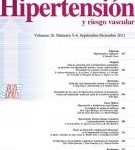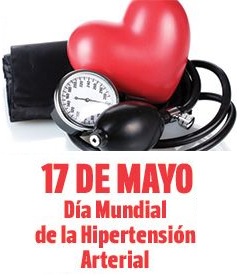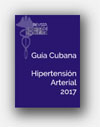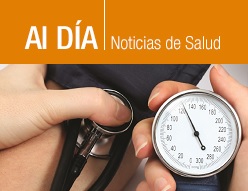Editorial. Los trabajos y opiniones que aquí se exponen son orientadores de lo que se publica en Cuba y en el mundo sobre aspectos relevantes de la hipertensión arterial.
 Por: Manuel A. Gómez-Marcos, Jose I. Recio-Rodríguez, María C. Patino-Alonso, Cristina Agudo-Conde, Emiliano Rodríguez-Sánchez, Leticia Gómez-Sánchez, Marta Gómez-Sánchez y Luis García-Ortiz. American Journal of Hypertension, Volume 26, Issue 5, Pp. 599-607.
Por: Manuel A. Gómez-Marcos, Jose I. Recio-Rodríguez, María C. Patino-Alonso, Cristina Agudo-Conde, Emiliano Rodríguez-Sánchez, Leticia Gómez-Sánchez, Marta Gómez-Sánchez y Luis García-Ortiz. American Journal of Hypertension, Volume 26, Issue 5, Pp. 599-607.
We sought to analyze the relationship between uric acid (UA) and vascular structure and function based on the carotid intima-media thickness, the pulse-wave velocity (PWV), the central arterial pressure, and the augmentation index in hypertensive patients and to evaluate the sex-related differences.
A cross-sectional study was performed with 366 hypertensive individuals aged 34–75years (men = 61.74%). The vascular structure was assessed based on the carotid intima-media thickness, the arterial stiffness was assessed by PWV, and the vascular function was assessed using hemodynamic parameters such as the central and peripheral augmentation index and the ambulatory arterial stiffness index (AASI).
Serum UA showed a positive correlation with the mean maximum intima-media thickness and PWV, and this parameter showed a negative correlation with the central and peripheral augmentation indices, although this relationship was lost after adjusting for confounding factors. AASI showed a positive association in women and a negative association in men after adjusting for confounding factors. [Actualizado: 8 de abril de 2013]
A manera de editorial. Los trabajos y opiniones que aquí se exponen son orientadores de lo que se publica en Cuba y en el mundo sobre aspectos relevantes de la hipertensión arterial.
Dietary fructose in relation to blood pressure and serum uric acid in adolescent boys and girls
 Por: K S Bobridge, G L Haines, T A Mori, L J Beilin, W H Oddy, J Sherriff y T A O’Sullivan. Journal of Human Hypertension (2013) 27, 217–224.
Por: K S Bobridge, G L Haines, T A Mori, L J Beilin, W H Oddy, J Sherriff y T A O’Sullivan. Journal of Human Hypertension (2013) 27, 217–224.
Evidence that fructose intake may modify blood pressure is generally limited to adult populations. This study examined cross-sectional associations between dietary intake of fructose, serum uric acid and blood pressure in 814 adolescents aged 13–15 years participating in the Western Australian Pregnancy Cohort (Raine) Study. Energy-adjusted fructose intake was derived from 3-day food records, serum uric acid concentration was assessed using fasting blood and resting blood pressure was determined using repeated oscillometric readings. [Actualizado: 18 de marzo 2013]
Ácido úrico como factor de riesgo cardiovascular
Por: Cebollada, J. y Gimeno, J.A. Hipertensión y riesgo vascular. 2012;29:36-43. – vol.29 núm 02.
La relación entre niveles séricos de ácido úrico y enfermedad cardiovascular es conocida desde hace tiempo. Sin embargo, ha sido en los últimos años cuando hemos encontrado creciente evidencia estableciendo el posible papel patogénico del ácido úrico en las diferentes manifestaciones de la enfermedad cardiovascular. La importancia de esta relación continúa siendo motivo de controversia y el debate sobre si debemos considerar la hiperuricemia un factor de riesgo vascular independiente o si es un mero epifenómeno de la enfermedad vascular o metabólica permanece abierto. Esta revisión pretende repasar la evidencia sobre estos aspectos.
 Interaction between serum uric acid and triglycerides in relation to blood pressure
Interaction between serum uric acid and triglycerides in relation to blood pressure
Por: F Teng, R Zhu, C Zou, Y Xue, M Yang, H Song y J Liang. Journal of Human Hypertension (2011) 25, 686–691.
El objetivo de este estudio fue examinar la relación independiente entre el ácido úrico sérico (SUA) y la presión arterial, y para evaluar su efecto conjunto sobre la obesidad, glucosa y los lípidos. Las muestras del estudio eran de una encuesta de salud basados en la comunidad de examen en Xuzhou, provincia de Jiangsu de China (2009).





![Glosario: hipertensión [Hipertensión arterial en la atención primaria de salud. 2009]](http://temas.sld.cu/hipertension/files/2016/04/Glosario-e1541006177950.jpg)



Comentarios recientes